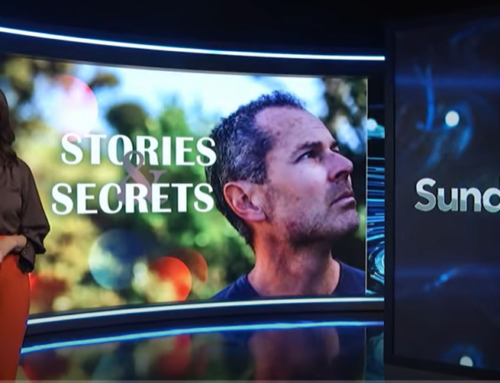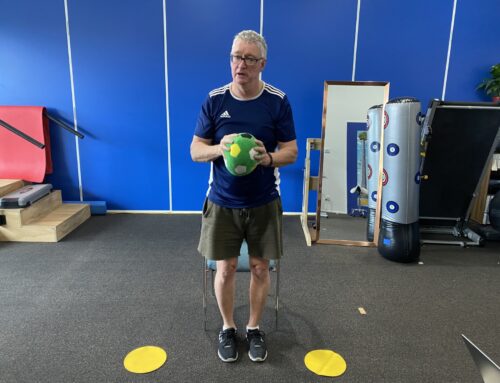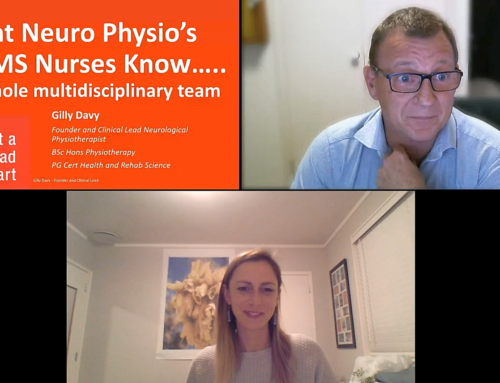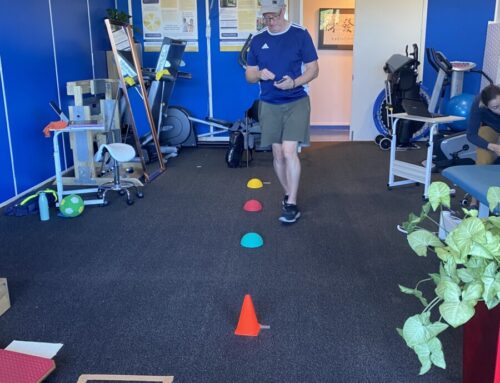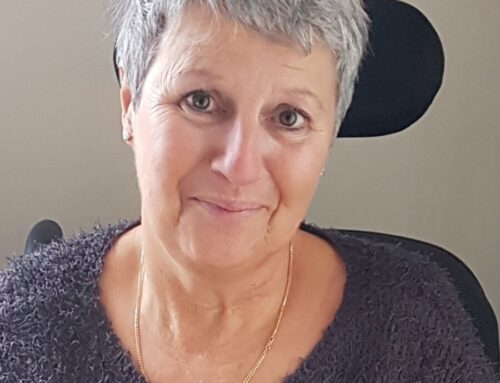Do you know to the full extent what a neurological orthotist does and how the input in your rehabilitation can be absolutely vital for you to maximise your outcomes. I have had the pleasure of working alongside Bernard Badorrek from Orthomotion for several years now and I am often inspired by his analysis skills and creativity to achieve the best possible outcome for the client. So to assist you in having a better understanding of the orthotists role in rehabilitation Bernard has provided us with some answers on what he actually does.
- What is a neurological orthotist?
An orthotist is a tertiary qualified allied health professional specialising in the treatment of people experiencing physical and functional limitations resulting from illnesses and disabilities through the prescription, design and fitting of orthoses.
An orthosis is a piece of equipment applied externally to the body which assists in one or a combination of the following:
- optimise or normalise walking patterns
- prevent further deformity
- correct flexible deformity
- increase or enhance balance, increase base of support
- reduce energy expenditure
- fix, block range of motion or assist movement across joints
- assist with postural positioning
Orthotists possess a sound knowledge and understanding of anatomy, physiology, and biomechanics of the body to assist with various disabling pathologies that they regularly treat.
Orthotists are highly trained clinical and technical specialists. Clinical aspects include assessment and evaluation of biomechanics, muscle strength, joint ranges of motion and characteristics of the neuro-muscular system. Technical fundamentals include modification of the positive moulds, componentry selection, materials selection and individual assembly and configuration of the final orthosis.
A neurological orthotist specialises in the treatment of people with neuromuscular conditions. Typical clients include people who live with the effects of:
- Stroke
- Brain or spinal injury
- Multiple sclerosis
- Poliomyelitis
- Neuropathy
- CMT
- Motor neuron disease
Orthotists work alongside other allied health and medical professionals to deliver quality health services and are integral members of a multidisciplinary health team.
- How did you get into the orthotic profession?
My career as a neurological orthotist started with tertiary degree in anatomical sciences and physiology. After completing a post graduate science qualification my focus shifted to orthotics and prosthetics. As a neurological orthotist I am able to combine specialised patient care with the highly technical role of orthosis design and fabrication.
- What does a neurological orthotist do?
Assessment
I begin by providing my clients with a comprehensive, detailed and specific assessment of their condition. I ensure I have an understanding of the level of support that is available from partners, family members and carers.
A comprehensive assessment will include an evaluation of biomechanics, muscle strength, joint ranges of motion and characteristics of the neuro-muscular system. Video gait analysis enables the identification of any deviations that occur during walking.
A casting procedure will involve making a cast of the clients limb taking into account the outcomes of the assessment procedure. The casting session will create a model of the limb which is used to fabricate a custom made orthosis.
Treatment
I work with my clients to establish personalised treatment goals centred on restoring movement and function. By working with medical consultants, physiotherapists and other rehabilitation specialists I ensure my clients get the best possible results. I have onsite specialist neurological physiotherapists who specialise in strengthening and gait retraining programs designed to maximise the functional outcomes for clients wearing a new orthotic device.
A fitting appointment involves applying the orthosis to the client’s limb which is tested in a controlled environment to ensure that the fit of the device is sound and comfortable and that the orthosis delivers the outcomes for which it is designed. Video gait analysis is used to tune the orthosis and the client footwear to deliver optimal outcomes in walking.
Technologies
I use a global network of specialist manufacturers to source cutting edge technologies that meet the individual needs of my clients. I specialise in dynamic carbon fibre orthoses and cutting edge componentry which offer substantial biomechanical advantages over conventional designs. I also specialise in state-of-the-art knee control componentry which can be incorporated into a carbon fibre frame to maximise limb control.
Service
As a neurological orthotist I need to understand the physical, mental and emotional issues that are experienced by our clients and respond with a sensitive, considerate and caring approach through all stages of treatment. Attention to detail and professional expertise ensures a high quality service that will deliver meaningful outcomes for clients and their families.
A review or evaluation appointment is always scheduled after the fitting of an orthosis to discuss the outcome of the orthosis and to discuss the clients experiences. Adjustments to the orthosis may be made at this time or following further assessment and evaluation to ensure that the orthosis is delivering the best possible outcomes to the client.
- What would be some of the main reasons someone would need to be assessed and treated by you?
A neurological orthotist specialises in the treatment of people with neuromuscular conditions who want to improve their mobility and quality of life. Typical clients include people who live with the effects of:
- Stroke
- Brain or spinal injury
- Multiple sclerosis
- Poliomyelitis
- Neuropathy
- CMT
- Motor neuron disease
People living with neuromuscular conditions frequently have mobility impairments. Treatment is focussed on restoring control of the lower limbs to assist the client to walk safely, efficiently and independently. I see clients who need help to:
- improve their balance and stability and reduce the likelihood of falls
- gain more control when standing
- gain a faster, more natural gait
- enhance their energy levels and reduce fatigue
- increase their independence when walking
- increase their functional potential
For more information on Orthomotion please click on the link: www.orthomotion.com.au


